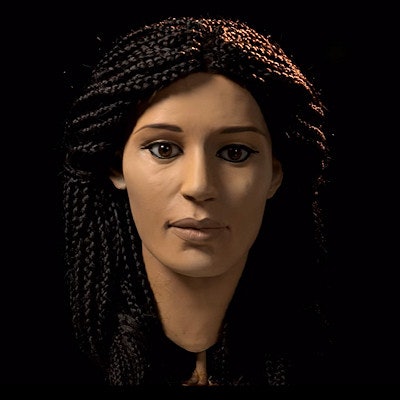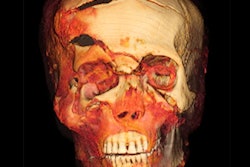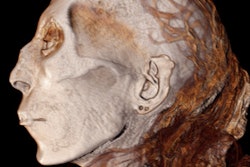
Australian researchers used CT, 3D printing, and some forensic tricks to reconstruct the face of Meritamun, a high-status woman who lived in ancient Egypt during the reign of the pharaohs, according to a story on Seeker.com.
The scientists and artists who labored to reconstruct her ended up knowing approximately when she lived (about 3,500 years ago), what she ate, and what may have caused her death, the article states. (Hint: It may have been an early case of death by sugar.)
One classy woman
The Harry Brookes Allen Museum of Anatomy and Pathology at the University of Melbourne in Australia, which owns the Meritamun mummy, grew concerned that it was showing signs of decay due to oil and embalming fluid collecting on the mummy's head.
The presence of fine linen bandages indicated that Meritamun had a high status and most likely lived around 1500 BCE, according to the article.
Museum curator Ryan Jefferies sent the mummy for a CT scan, which revealed that the skull was in good shape. He then put together a team of experts to sort out the rest of the mummy's past. Even the gender was unknown when the group began its work.
CT revealed that the skeleton was that of a female. Further research revealed that her name was Meritamun, which means beloved of the god Amun.
Sugar blues, honey
CT also showed that Meritamun had two tooth abscesses, which could have come from eating sugar, which was imported to the region after the conquest of Alexander the Great in 331 BC. But the decay could also have come from honey, which was available much earlier.
There were also signs that Meritamun was anemic, as evidenced by bone marrow swelling. The skull bone was also thin and pitted, which may have come from malaria parasites, Seeker.com reported.
The research team reconstructed Meritamun's face using a 3D rendering created from CT data and then printed the skull using 3D printing. Sculptor Jennifer Mann used the 3D-printed skull to reconstruct Meritamun's face.
Plastic fiduciary markers were placed at different locations on the skull to mark where tissue might be thinner or thicker, based on the age of the mummy. The team based the nose shape on the size of the nasal cavity.
The result: a lifelike 3D Meritamun model.
"It has been a hugely rewarding process to be able to transform the skull from CT data on a screen into a tangible thing that can be handled and examined," imaging technologist Gavan Mitchell from the University of Melbourne told the university's newspaper, Pursuit.




















